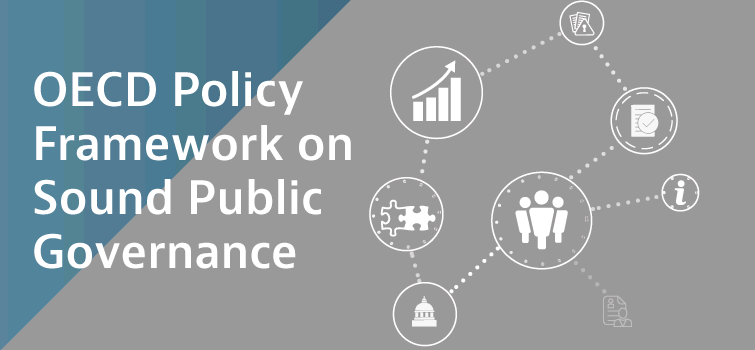Policy Framework on Sound Public Governance: Baseline Features of Governments that Work Well
To help governments at all levels respond to increasingly complex policy challenges, the OECD developed an integrated diagnostic, guidance and benchmarking tool, the Policy Framework on Sound Public Governance.
The Framework supports policymakers in:
- Designing and implementing public governance reforms
- Harnessing good governance practices for reforms in any policy area
- Designing and pursuing a public-governance agenda that enables governments to move closer to OECD standards and practice in this area
The Framework weaves together existing OECD legal instruments and tools on public governance and will highlight areas which are becoming increasingly relevant.
Why a policy framework?
The Framework aims to support policymakers by consolidating an integrated vision and coherent narrative of the main elements of sound public governance in OECD Member and non-Member countries. It builds on lessons learned and on practice-based evidence of what works, what does not and why, gathered over the past decade through the OECD’s work.
The Framework seeks to provide governments at all levels with an integrated self-assessment and guidance tool to:
- Design and implement public governance reforms that can lead to improvements in, and the sustainability of, prosperity for their country and wellbeing for its citizens;
- Design and implement reforms in any policy area by integrating into the reform initiative public governance approaches for effective policy-making;
- Design and pursue a public governance reform agenda that can enable governments to move closer to OECD standards and best/good practice in this area.
How does it work?
The Framework consists of five chapters, which are clustered in two parts:
- Values and Enablers of Sound Public Governance and
- Sound Public Governance for Policy Formulation, Implementation and Evaluation.
At the conclusion of each chapter, the Framework poses a small number of strategic questions that policy-makers can use to self-assess their government’s institutional and decision-making capacity in key public governance areas. The questions seek to guide policy-makers in determining whether their governments have adopted good practices in light of the evidence the OECD has gathered in each governance area on country trends and practice in pursuing reforms and in designing, implementing, and evaluating policies.
The Framework also provides a list of additional resources that can help policymakers gain a better understanding of OECD standards and practice in sound public governance.
The Framework consists of five chapters, which are clustered into two parts:
Part 1 - The Values and Enablers of Sound Public Governance
| Chapter 1 - The Values of Sound Public Governance | Chapter 2 - The Enablers of Sound Public Governance | |
Part 2 - Sound Public Governance for Policy Formulation, Implementation and Evaluation
| Chapter 3 - Towards Sound Policy Formulation and Design | Chapter 4 - Towards Sound Policy Implementation | Chapter 5 - Towards Robust Policy Evaluation | ||
Download the Framework
Contact us
If you have any questions please do not hesitate to contact us
